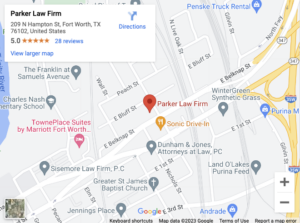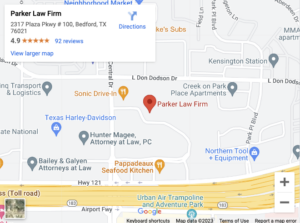
Whose fault was the accident? In many personal injury cases, the truth may be that more than one party was to blame. This is especially likely to be true in the case of traffic accidents. Texas has several ways of apportioning damages among the parties under such circumstances.
Proportionate Responsibility (Comparative Fault)

Under the Texas proportionate responsibility system, a court can assign each party a percentage of fault for the damages arising from an accident or incident. Typically, this means an accident caused by negligence (carelessness). Nevertheless, proportionate responsibility can also apply where the victim has no duty to prove fault, such as in a strict liability case.
Percentages
If a court determines that your percentage of fault lies between 1% and 50%, you will lose that percentage of your compensation. If you were 45% at fault and were awarded $100,000, for example, you would lose $45,000 in damages. This would leave you with only $55,000. The defendant would be relieved of any obligation to pay you the remaining $45,000.
If your percentage of fault is 51% or higher, you cannot receive any damages at all. You will also have to pay whatever percentage of the other party’s damages equals your percentage of fault.
Negligence: The Four Elements
To establish negligence, you must prove the following four facts:
- The defendant owed a duty of care to the victim. All drivers, for example, owe a duty of safe driving to all other drivers. A doctor owes an elevated duty of professional care toward their patients.
- The defendant failed to meet (breached) their duty of care.
- The victim suffered an injury. A “good scare” is not enough for a personal injury claim. The injury must be physical. Once a physical injury is proven, the victim can recover for psychological harm as well.
- The defendant’s breach of duty was the proximate and factual cause of the victim’s harm. This means that (i) the injury would not have occurred but for the defendant’s breach of duty, and (ii) the relationship between the defendant’s breach of duty and the harm that the defendant suffered was sufficiently direct.
The victim must prove every dime of damages they claim.
The burden of proof
To establish negligence, you must prove all four of the foregoing elements on a “more likely than not” basis. In legal parlance, this standard is known as “a preponderance of the evidence.” It is a much easier standard to meet than, for example, “beyond a reasonable doubt.”
Examples of Negligence
Many different types of acts and omissions can trigger a finding of proportionate responsibility in Texas, including:
- Driving while intoxicated on alcohol or drugs.
- Distracted driving, such as driving while texting, talking on the phone, listening to music, arguing with a passenger, shaving in the rearview mirror, and similar activities.
- Failing to erect a “Wet Floor” sign after mopping up a spill in a restaurant.
- Leaving a banana peel on the floor in a grocery store.
- Failing to order lab tests when a patient complains of chest pains;
- Failing to repair rotten wooden steps (a property owner);
- Allowing your dog to roam freely, especially if the dog has known aggressive tendencies.
A Texas court might find proportionate responsibility without proof of negligence, such as in the case of a defective product.
Assumption of Risk
Assumption of risk is an affirmative defense that the defendant must prove. The defendant may argue that the victim assumed the risk when they knowingly and voluntarily agreed to participate in a dangerous activity.
This agreement can be verbal or written; however, typically, it takes the form of a signed written waiver of liability. An example might be a skydiving injury. Assumption of the risk also applies when the victim suffers an injury while committing a felony or attempting to kill themselves.
If successful, this defense can serve as a partial or full defense, depending on the circumstances.
Failure To Mitigate Damages
The concept of failure to mitigate damages applies when the victim claims damages they could have avoided through reasonable care.
Suppose, for example, that a driver’s negligence injures a victim. Nevertheless, the victim fails to seek immediate medical treatment despite an obvious injury.
Suppose it is reasonably easy to separate the harm caused by the accident from the harm caused by failure to seek medical treatment. In that instance, a court might refuse to award the victim compensation for any damage caused by their failure to seek medical treatment.
Do I Need a Bedford Personal Injury Lawyer If I Plan To Settle My Claim?
If your claim is large, you might need a lawyer – even if you plan to settle out of court. You might find the opposing party unwilling to settle until you hire a Bedford personal injury lawyer with a strong track record of winning in court. The best way to avoid a trial is to prepare to win one.
Contact an experienced personal injury attorney from Parker Law Firm Injury Lawyers today at (817) 839-3143 for an initial free case evaluation.


